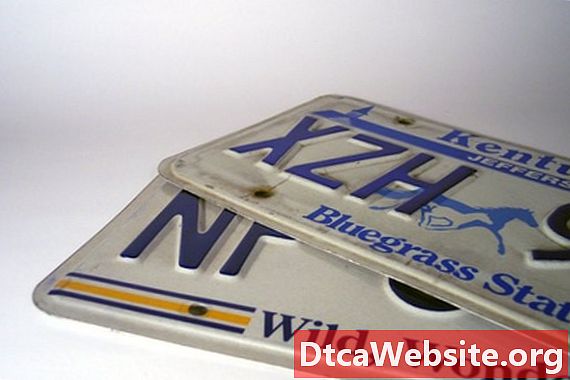
Contenu

Tinted windshields can prove to be a great boon when the sunlight would otherwise blind you while driving. As with any style of window tinting, windshield tints can be made to be incredibly dark or just light enough to shield your eyes without cutting down your sight range. Windshield tints can be created through a variety of processes, each of which having specific attributes which can affect your driving experience. State-by-state regulations mandate what level of windshield tinting is allowable by law.
Gradients
Window tints can come in any gradient of visible light transmission. Visible light transmission, or VLT, is a percentage of the light that is allowed through a tinted window; if a window has 40 percent visible light transmission, then 40 percent of the light that reaches it is allowed to pass and the other 60 percent is blocked. The precise gradient of visible light transmission allowed by a certain window tint can be found by using an electronic visible light transmission meter.
Types
All windshield tinting consists of a film that is secured against the inside of the windshield and contains tint. There are multiple processes for creating tinted film, each with different characteristics, which makes choosing the right tint style important. One type of film tinting process requires the tinting of the film to achieve the desired gradient of VLT. Dyed films are known for their ability to absorb the heat created by sunlight and keep it out of the car. Although there is some bleeding of heat into the car, most of the heat absorbed by the dye will be repelled back into the environment. A more reflective tint can be created through metallic processes, although heat absorption suffers somewhat. Tinted films can be created through deposition, in which a film is passed through a vacuum where metal ingots are heated until they give off particles that tint the film, or through sputtering, which uses electromagnetic fields to divert metallic ions from a gas towards a metal, causing atomic particles from that metal to jump up and cover the film. Windshield tints may also be created through multiple films created through either dying or metallic processes. These types of tints will retain some of the heat absorption and reflective properties of both tinted film types.
State Laws
Although any gradient of tint can be created through these processes, each state has its own laws that govern how little VLT can be allowed by windshield tints. For windshields, most states regulate how far down a tint can extend from the top; for instance, California, Colorado and Hawaii all set the maximum tint length at 4 inches, while windshield tints in Washington, Oregon and New York can extend downward 6 inches from the top.


